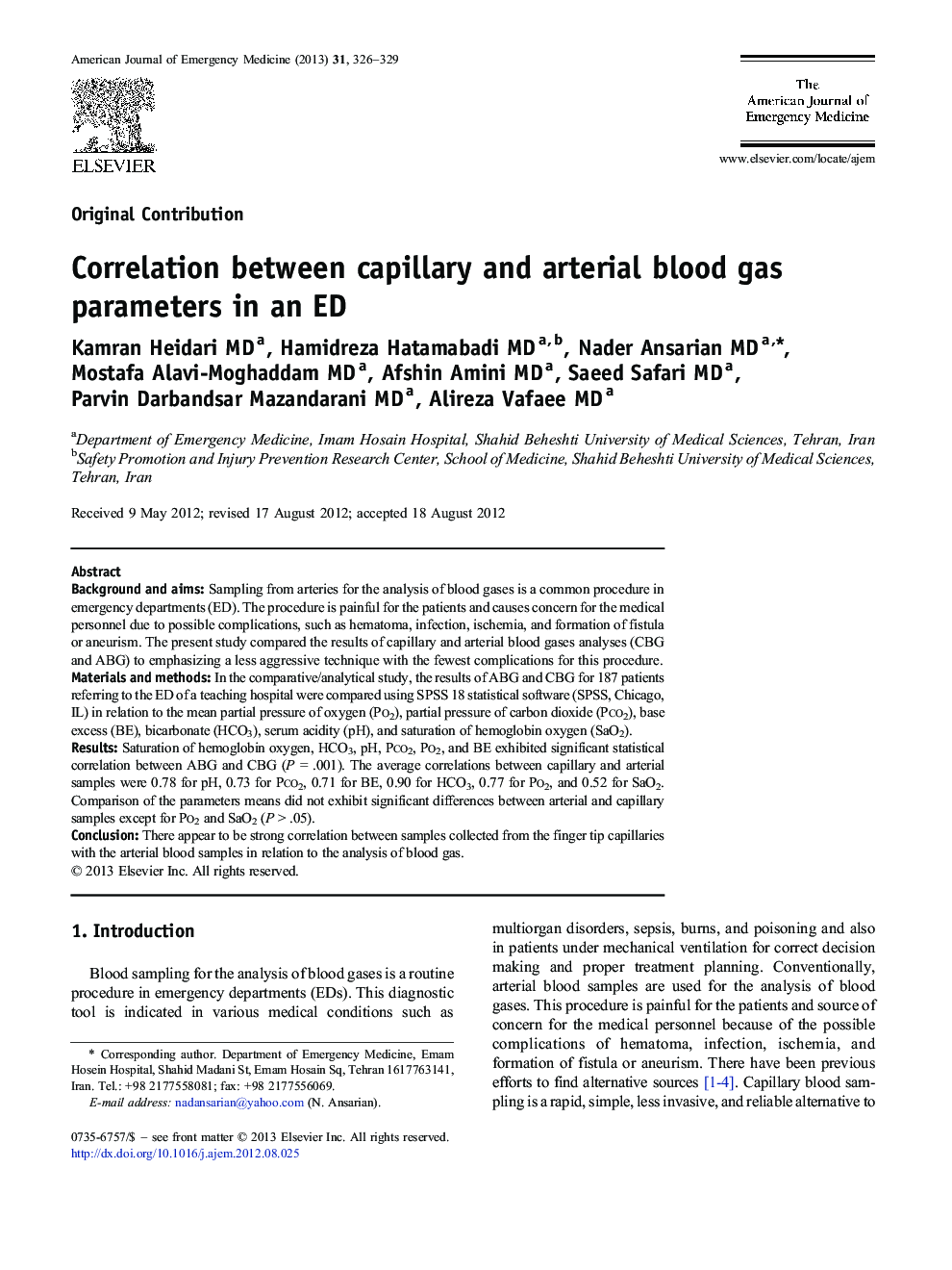| Article ID | Journal | Published Year | Pages | File Type |
|---|---|---|---|---|
| 3224606 | The American Journal of Emergency Medicine | 2013 | 4 Pages |
Background and aimsSampling from arteries for the analysis of blood gases is a common procedure in emergency departments (ED). The procedure is painful for the patients and causes concern for the medical personnel due to possible complications, such as hematoma, infection, ischemia, and formation of fistula or aneurism. The present study compared the results of capillary and arterial blood gases analyses (CBG and ABG) to emphasizing a less aggressive technique with the fewest complications for this procedure.Materials and methodsIn the comparative/analytical study, the results of ABG and CBG for 187 patients referring to the ED of a teaching hospital were compared using SPSS 18 statistical software (SPSS, Chicago, IL) in relation to the mean partial pressure of oxygen (Po2), partial pressure of carbon dioxide (Pco2), base excess (BE), bicarbonate (HCO3), serum acidity (pH), and saturation of hemoglobin oxygen (SaO2).ResultsSaturation of hemoglobin oxygen, HCO3, pH, Pco2, Po2, and BE exhibited significant statistical correlation between ABG and CBG (P = .001). The average correlations between capillary and arterial samples were 0.78 for pH, 0.73 for Pco2, 0.71 for BE, 0.90 for HCO3, 0.77 for Po2, and 0.52 for SaO2. Comparison of the parameters means did not exhibit significant differences between arterial and capillary samples except for Po2 and SaO2 (P > .05).ConclusionThere appear to be strong correlation between samples collected from the finger tip capillaries with the arterial blood samples in relation to the analysis of blood gas.
